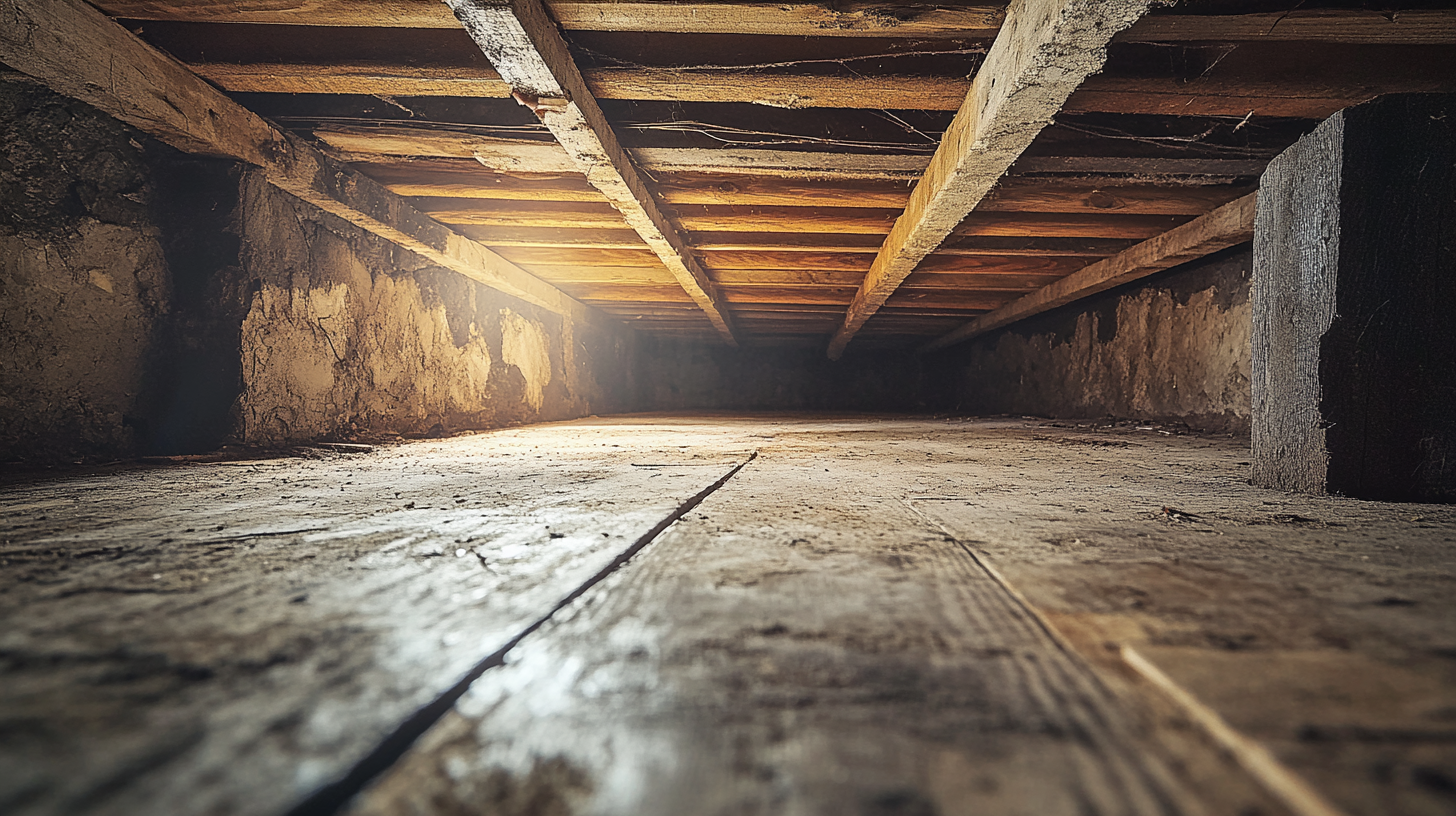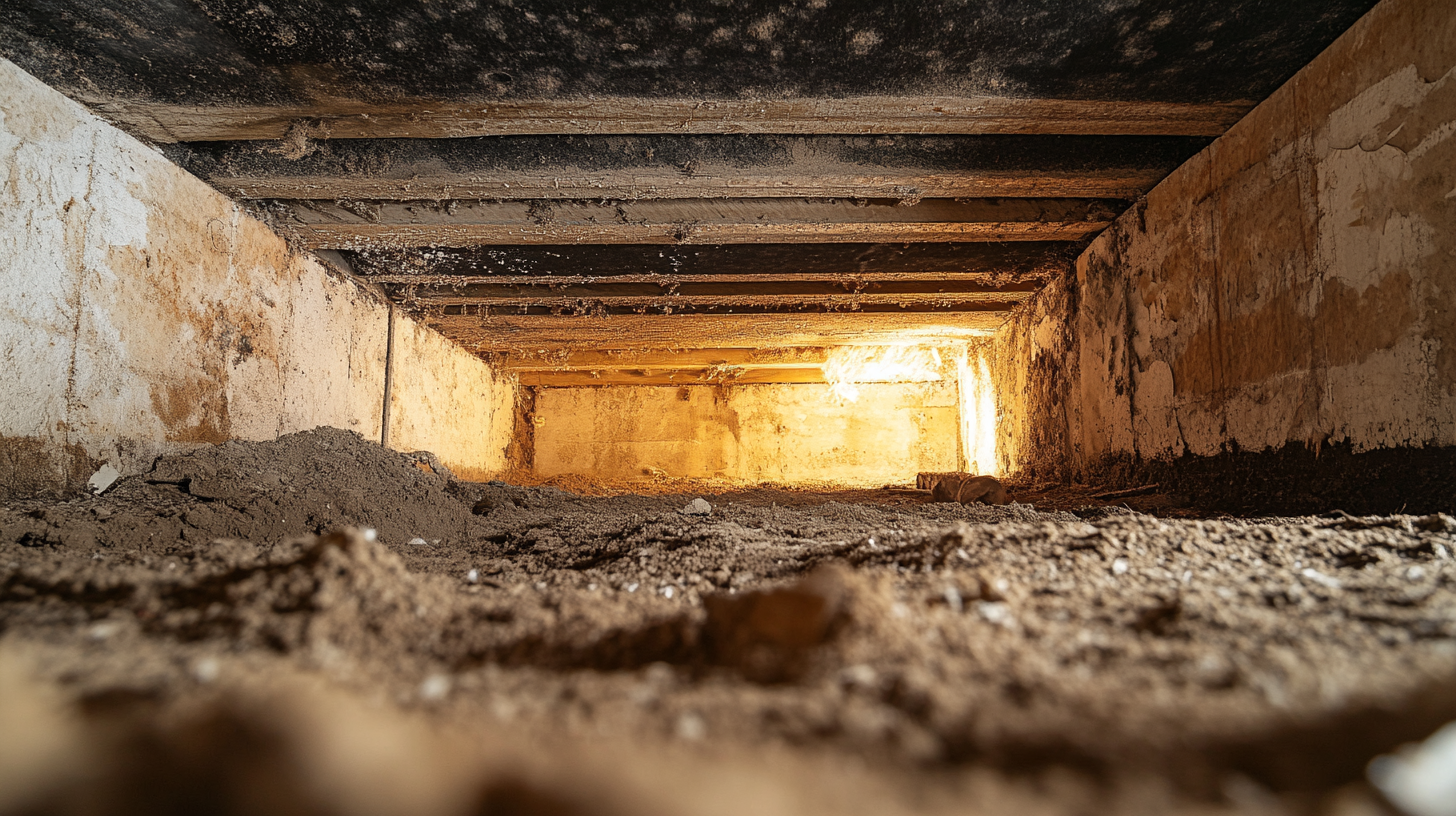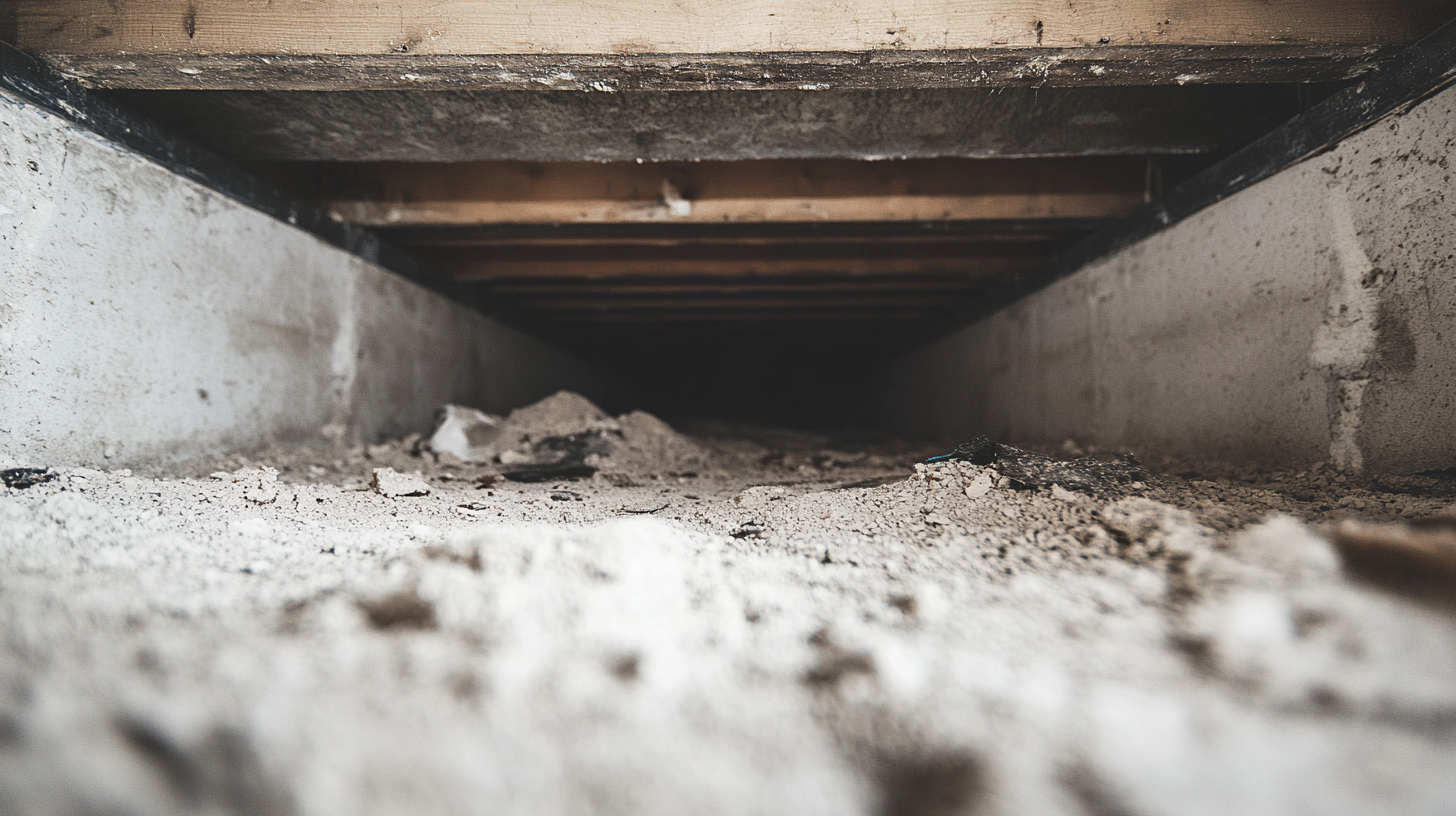The Impact of Soot on Indoor Air Quality

Soot, a fine black or dark brown powder formed through incomplete combustion of fossil fuels, wood, and other organic materials, is more than just a residue that dirties surfaces; it's a pervasive environmental pollutant that can significantly affect indoor air quality and health. This blog delves into the essence of soot, exploring its composition, common sources within indoor environments, and the implications it holds for our living spaces.
Originating from a variety of combustion processes, soot comprises a complex mixture of carbon particles, acids, chemicals, metals, and dust. Its presence in indoor environments often goes unnoticed, silently accumulating on surfaces and in the air we breathe. Common sources of indoor soot include tobacco smoke, candles, gas stoves, wood-burning fireplaces, and malfunctioning furnaces, each contributing to the fine particulate matter that can penetrate deep into the lungs and even enter the bloodstream.
Understanding soot and its sources is the first step toward mitigating its impact on our health and indoor environments. By exploring how everyday activities contribute to soot production and learning strategies to minimize exposure, we can take proactive steps to ensure our homes remain safe, clean, and healthy. Join us as we shed light on the shadowy presence of soot, offering insights and solutions to protect the air quality in our indoor sanctuaries.
Understanding Soot
Soot is a pervasive component of air pollution, both outdoors and indoors, with significant implications for health and air quality. Understanding the composition and properties of soot, along with how it enters and affects indoor environments, is essential for effectively managing and reducing its impact. This section delves into the makeup of soot, its generation, and its behavior within indoor spaces.
Composition and Properties of Soot
Soot is formed through the incomplete combustion of carbon-containing fuels such as wood, oil, coal, and other organic materials. Its composition is complex, consisting of:
- Carbon Particles: The primary component of soot, these tiny particles form the core of soot aggregates.
- Organic Compounds: Soot contains a variety of organic chemicals, including polycyclic aromatic hydrocarbons (PAHs), which are known for their carcinogenic properties.
- Metals and Inorganics: Combustion processes can also incorporate metals and other inorganic materials into soot particles, contributing to their toxicity.
- Sulfates and Nitrates: These compounds can attach to soot particles, further complicating their impact on health and the environment.
The properties of soot, such as its small particle size (often in the nano to micron range), high surface area, and ability to adsorb various compounds, make it particularly harmful when inhaled, as it can penetrate deep into the lungs and even enter the bloodstream.
How Soot Enters and Affects Indoor Air
Soot can enter indoor environments through several pathways:
- Outdoor-to-Indoor Migration: Soot particles from outdoor air pollution can enter homes and buildings through open windows, doors, and ventilation systems.
- Indoor Combustion Sources: Activities such as smoking, cooking with gas stoves, burning candles, and using fireplaces or wood stoves can generate soot indoors.
- Faulty Furnaces and Heating Systems: Malfunctioning or improperly vented furnaces and heating systems can release soot into indoor air.
Once inside, soot particles can settle on surfaces or remain suspended in the air, where they can be inhaled by occupants. The presence of soot indoors can lead to a range of health issues, from respiratory problems to cardiovascular diseases, particularly in individuals with pre-existing health conditions, the elderly, and children.
Understanding the sources and behavior of soot in indoor environments is crucial for implementing strategies to reduce exposure, such as improving ventilation, using air purifiers with HEPA filters, and ensuring that combustion appliances are properly maintained and vented.
Health Implications of Soot in Indoor Air
The presence of soot in indoor air poses significant health risks, impacting residents' well-being in both the short and long term. Understanding the health implications of soot exposure is crucial for taking proactive measures to protect yourself and your loved ones. This section explores the immediate health impacts of soot exposure and the chronic health conditions associated with prolonged exposure.
Short-Term Health Effects
Exposure to soot, even for a short period, can have immediate health effects, particularly on the respiratory system and overall comfort. Individuals exposed to soot may experience:
- Respiratory Irritation: Inhalation of soot particles can irritate the airways, leading to coughing, throat irritation, and shortness of breath.
- Eye and Skin Irritation: Soot particles can cause discomfort to the eyes, resulting in redness, itching, and watering. Skin contact with soot may also lead to irritation and rashes.
- Aggravation of Asthma and Allergies: For individuals with pre-existing respiratory conditions such as asthma or allergies, soot can exacerbate symptoms, leading to increased frequency and severity of attacks.
These short-term effects highlight the importance of minimizing soot exposure, especially for vulnerable populations such as children, the elderly, and those with pre-existing health conditions.
Long-Term Health Risks
Prolonged exposure to soot in indoor air can lead to more serious, long-term health risks. Chronic conditions associated with long-term soot exposure include:
- Cardiovascular Diseases: Studies have linked long-term exposure to fine particulate matter, including soot, with an increased risk of heart disease, stroke, and hypertension.
- Respiratory Diseases: Continuous inhalation of soot particles can contribute to the development of chronic respiratory diseases, such as chronic obstructive pulmonary disease (COPD) and lung cancer.
- Compromised Immune System: There is evidence to suggest that prolonged exposure to soot can affect the immune system, making individuals more susceptible to infections and diseases.
The long-term health risks associated with soot underscore the need for effective strategies to improve indoor air quality, such as ensuring proper ventilation, using air purifiers, and reducing sources of soot within the home.
Assessing and Monitoring Indoor Air Quality
Indoor air quality (IAQ) is a significant concern for homeowners, businesses, and health-conscious individuals. Poor IAQ can lead to a range of health issues, from minor irritations like allergies and headaches to more severe conditions such as respiratory diseases and long-term health complications. Understanding the signs of poor indoor air quality and utilizing the right tools for its assessment can help mitigate these risks, ensuring a healthier living and working environment.
Signs of Poor Indoor Air Quality
Several indicators can signal the presence of soot, pollutants, and other harmful
substances in your indoor environment. Recognizing these signs is the first step towards improving the air quality in your home or workplace:
- Persistent Health Symptoms: Frequent headaches, dizziness, fatigue, and respiratory issues can often be attributed to poor IAQ. If these symptoms improve when you leave a particular environment, it's a clear indicator that the indoor air quality may be compromised.
- Unpleasant Odors: Persistent odors without a discernible source can be a sign of inadequate ventilation and the accumulation of volatile organic compounds (VOCs) indoors.
- Dust Build-up and Soot Particles: Excessive dust or soot around your HVAC systems, on furniture, or in other areas of your indoor space can indicate poor air filtration and circulation.
- Humidity Issues: Either too high or too low humidity levels can contribute to discomfort and health problems, as well as indicate potential IAQ issues.
- Visible Mold and Mildew: The presence of mold or mildew, especially in areas with high moisture, can significantly affect indoor air quality and pose health risks.
Tools for Measuring Air Quality
To effectively monitor and assess the quality of indoor air, several tools and devices are available, ranging from simple to advanced technologies:
- Air Quality Monitors: These devices can measure a variety of pollutants, including VOCs, particulate matter (PM2.5 and PM10), carbon dioxide (CO2), humidity, and temperature. They provide real-time data, helping you understand your indoor air quality at any given moment.
- Carbon Monoxide Detectors: Essential for every indoor space, these detectors can save lives by alerting you to the presence of this odorless, colorless, but deadly gas.
- Radon Test Kits: Radon is a naturally occurring radioactive gas that can enter homes through the ground. It's the second leading cause of lung cancer. Radon test kits are a crucial tool for assessing whether your indoor environment is at risk.
- Humidity Meters (Hygrometers): Managing humidity levels is vital for comfort and health. Hygrometers help monitor these levels, allowing you to take action when necessary to maintain optimal humidity.
- Smart HVAC Filters: Some advanced HVAC filters are equipped with sensors that alert you when they need to be changed, ensuring that your system is not contributing to poor indoor air quality.
Improving indoor air quality is a proactive step towards a healthier life. By understanding the signs of poor IAQ and utilizing the appropriate tools for its assessment, individuals can take meaningful action to ensure their environments are safe, comfortable, and conducive to well-being.
Strategies for Improving Indoor Air Quality
Ensuring clean, healthy air inside homes and workplaces is essential for comfort, health, and overall well-being. Indoor air quality (IAQ) can be compromised by various pollutants, including soot, volatile organic compounds (VOCs), and particulate matter. Fortunately, there are effective strategies for mitigating these risks, focusing on source control and reduction, and enhancing ventilation and air purification.
Source Control and Reduction
The first line of defense in improving IAQ is to eliminate or significantly reduce the sources of pollutants:
- Minimize Soot Production: Soot can originate from candles, fireplaces, and gas stoves. Opt for cleaner-burning candles, such as those made from soy or beeswax, and ensure your fireplace is well-maintained and ventilated. When using gas stoves, turn on an exhaust fan to minimize indoor soot.
- Reduce Chemical Pollutants: Many household cleaning products, paints, and building materials emit VOCs, which can degrade IAQ. Opt for low-VOC or VOC-free products and ensure adequate ventilation during and after their use.
- Control Dust and Allergens: Regular cleaning routines, including vacuuming with HEPA-filter-equipped vacuums and dusting with damp cloths, can significantly reduce dust and allergen levels indoors.
- Prevent Mold Growth: Address moisture issues promptly to prevent mold and mildew, which can severely affect air quality. Use dehumidifiers in damp areas and fix leaks as soon as they're detected.
Ventilation and Air Purification
Improving ventilation and purifying the air are key strategies for removing contaminants and ensuring a healthy indoor environment:
- Enhance Natural Ventilation: Whenever possible, open windows and doors to allow fresh air to circulate and dilute indoor pollutants. This is especially important during activities that can increase indoor pollution levels, such as cooking or painting.
- Use Mechanical Ventilation: In areas where natural ventilation is insufficient or not feasible due to outdoor pollution or weather conditions, mechanical ventilation systems can help. These systems, including HVAC with HEPA filters, ensure a constant flow of clean air into the space.
- Air Purifiers: Standalone air purifiers equipped with HEPA filters can effectively remove particulate matter, allergens, and other pollutants from indoor air. Place air purifiers in high-traffic areas or rooms where pollutants are most likely to accumulate.
- Maintain HVAC Systems: Regular maintenance of HVAC systems, including filter changes, is crucial for preventing these systems from becoming sources of indoor pollution themselves.
Implementing these strategies can significantly improve the quality of indoor air, contributing to a healthier, more comfortable living and working environment. By focusing on source control and enhancing ventilation and air purification, individuals can take proactive steps toward safeguarding their health and the well-being of those around them.
Cleaning and Restoration After Soot Contamination
Soot contamination in your home or workplace can not only cause damage to surfaces and belongings but also pose significant health risks due to the fine particles that can be inhaled, affecting lung and heart health. Effective cleaning and, when necessary, professional restoration are crucial steps in addressing soot contamination to ensure a safe, clean environment. Here’s how to approach the cleanup process:
Effective Soot Cleaning Techniques
Soot can adhere to various surfaces and penetrate materials, making cleanup challenging. However, with the right techniques, you can effectively remove soot and mitigate its impact:
- Safety First: Before starting the cleanup, ensure proper ventilation and wear protective gear, including gloves, N95 masks, and goggles to protect yourself from soot particles.
- Dry Sponges for Walls and Ceilings: Use a dry cleaning sponge (also known as a soot sponge) to gently remove soot from walls and ceilings. Avoid using water initially, as it can smear the soot and make it harder to remove.
- Vacuum Upholstery and Carpets: Use a vacuum cleaner with a HEPA filter to remove soot particles from soft surfaces without pushing them deeper into the material. Hold the vacuum nozzle slightly above the surface instead of pressing down.
- Specialized Cleaners for Hard Surfaces: For non-porous surfaces like countertops and metal fixtures, use a mild soap or a cleaner specifically designed for soot removal. Avoid abrasive scrubbing, which can embed soot particles further into the surface.
- Laundry for Washable Fabrics: Washable items contaminated with soot should be laundered separately using a heavy-duty laundry detergent. Consider pre-treating with a stain remover designed for greasy stains.
Professional Cleaning and Restoration Services
While DIY cleaning can be effective for minor soot contamination, there are circumstances where professional services are necessary:
- Extensive Damage: When soot contamination is widespread or the affected area is large, professional cleaners have the equipment and expertise to clean thoroughly and efficiently.
- HVAC Contamination: Soot can enter HVAC systems, spreading throughout a building and requiring specialized cleaning to prevent ongoing air quality issues.
- Health Risks: Individuals with respiratory conditions, allergies, or compromised immune systems should consider professional cleaning to ensure the removal of all soot particles and prevent health complications.
- Restoration of Valuables: Professional restorers can often salvage items that might otherwise be considered lost, using techniques and equipment not available to the general public.
Professional restoration services not only clean but also assess the damage to structural elements, recommend repairs, and ensure that your space is safe and healthy for occupancy. They can also help in dealing with insurance claims, providing detailed documentation of the damage and remediation efforts.
FAQs
Contact Fast Response Cleaning & Restoration Today!
Fast Response Cleaning & Restoration will do everything we can to ensure your experience with us is excellent.
Request A FREE Estimate
Request A FREE Estimate Form
CHECKOUT RECENT POST



Have an Emergency? We're Here to Help!
When it comes to disaster cleanup, we are a seasoned veteran in the industry and have helped hundreds of property owners just like you.
Our disaster recovery teams are available 24-7 to quickly clean up and repair disasters of all types.
